Try out this high definition image for your desktop or video chat background.
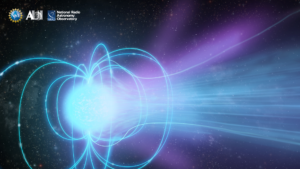
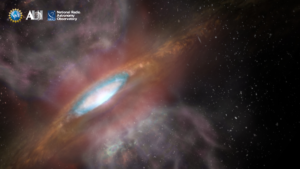
NRAO Background 2
Try out this high definition image for your desktop or video chat background.

The First Short GRB Millimeter Afterglow: The Wide-Angled Jet of Gamma Ray Burst 211106A
In a first for radio astronomy, scientists have detected millimeter-wavelength light from a short-duration gamma-ray burst. This artist’s conception shows the merger between a neutron star and another star (seen as a disk, lower left) which caused an explosion resulting in the short-duration gamma-ray burst, GRB 211106A (white jet, middle), and left behind what scientists now know to be one of the most luminous afterglows on record (semi-spherical shock wave mid-right). While dust in the host galaxy obscured most of the visible light (shown as colors), millimeter light from the event (depicted in green) was able to escape and reach the Atacama Large Millimeter/submillimeter Array (ALMA), giving scientists an unprecedented view of this cosmic explosion. From the study, the team confirmed that GRB 211106A is one of the most energetic short-duration GRBs ever observed.
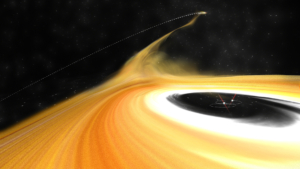
Z CMa Caught In Action Likely Flyby
Scientists have captured an intruder object disrupting the protoplanetary disk—birthplace of planets—in Z Canis Majors (Z CMa), a star in the Canis Majoris constellation. This artist’s impression shows the perturber leaving the star system, pulling a long stream of gas from the protoplanetary disk along with it. Observational data from the Subaru Telescope, Karl G. Jansky Very Large Array, and Atacama Large Millimeter/submillimeter Array suggest the intruder object was responsible for the creation of these gaseous streams, and its “visit” may have other as yet unknown impacts on the growth and development of planets in the star system.
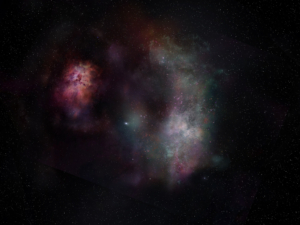
Artist’s conception of SPT0311-58
This artist’s conception shows the dust continuum and molecular lines of carbon monoxide and water seen in the pair of galaxies known as SPT0311-58. ALMA data reveals abundant CO and H20 in the larger of the two galaxies, indicating that the molecular Universe was going strong shortly after the elements were initially forged.
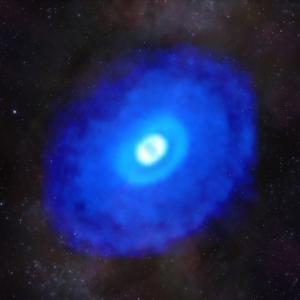
Hydrogen Cyanide in HD 163296
This composite image of ALMA data from the young star HD 163296 shows hydrogen cyanide emission laid over a starfield. The MAPS project zoomed in on hydrogen cyanide and other organic and inorganic compounds in planet-forming disks to gain a better understanding of the compositions of young planets and how the compositions link to where planets form in a protoplanetary disk.

